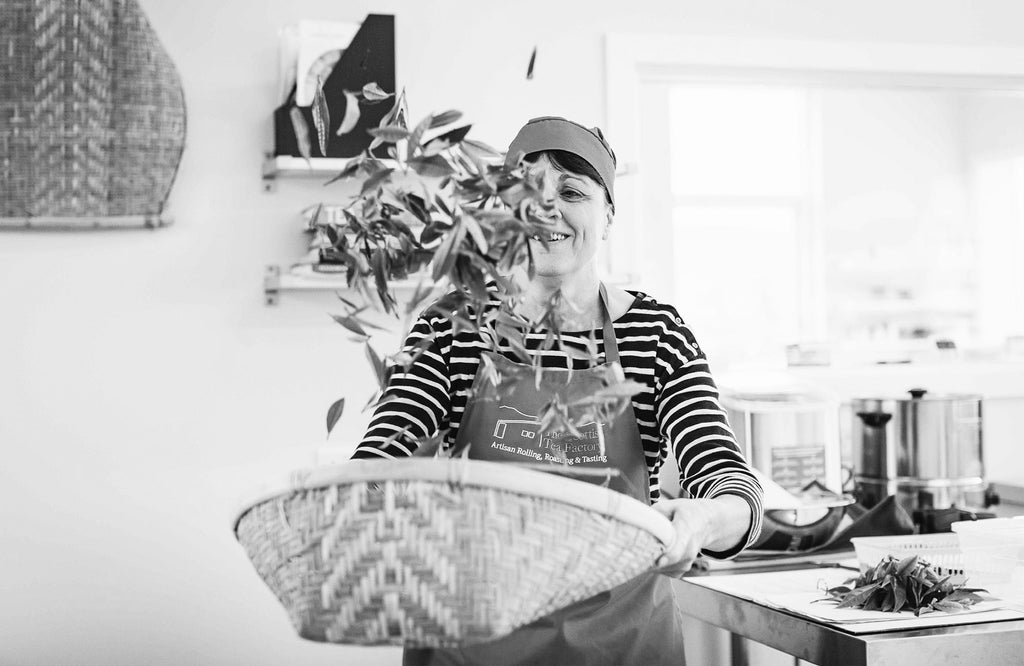
100% Scottish-grown tea? Let’s dance.
share
2 min steep
Nine Ladies Dancing is the name of a new tea. A spectacular new tea. It's the culmination of years of hard work and the celebration of a collective achievement. It’s 100% pure Scottish-grown tea from the Tea Gardens of Scotland – and it’s so good that it’s already been picked up by Fortnum and Mason’s rare and special tea counter and by us, for The Corinthia’s Royal Penthouse Suite.
Nine Ladies Dancing draws its name from the nine, indomitable women entrepreneurs who have repurposed the walled gardens of their ancient country houses, estates and castles into tea gardens in Perthshire, Fife, Angus and Kincardineshire. By sharing glasshouses, machinery and bucketloads of determination, these nine women propagated tea plants after experimenting with seeds from all over the world – and finally settled on cold-hardy varieties from Nepal and Georgia which would thrive in the unpredictable and often harsh Scottish climate.

|
01 Dollerie Tea Maze in Perthshire. Photograph: @teagardensofscotland |
02 Kinnordy Walled Tea Garden in Angus. Photograph: @teagardensofscotland |
As you can imagine, the challenges were legion. Growing tea in the UK is tricky, but their desire to create tea using purely Scottish-grown leaves is a testament to their commitment to provenance, authenticity and real quality (one well-known British tea company has got by with only using a small proportion of British-grown tea in their ‘British Tea’ blends whereas Nine Ladies Dancing is 100% Scottish leaf). As the nine tea gardens are spread across Scotland, their short growing season is not always in sync and they are all prey to erratic weather.
Over the years the TGS women trialled innovative farming techniques, like using insulating sheep’s wool steeped with organic fertilisers.

|
03 Sheep's wool and other materials used as insulation at Logie Tea Garden, Fife. Photograph: @teagardensofscotland |
04 Snow on the tea plants at Logie Tea Garden, Fife. Photograph: @teagardensofscotland
|
It’s a very slow process; the four-year old tea bushes that yielded Nine Ladies Dancing won’t reach full maturity for another two or three years, which is why such small quantities are currently being produced. As Beverley Wainwright, consultant to the collective, founder of the Scottish Tea Factory, UK Tea Academy trainer and allround tea genius, points out, “the quantities of tea being currently made are tiny, just a few kilos a year, making Scottish tea one of the rarest in the world.” Although the tea gardens only produce minute yields right now, the time, research and work put in by these trailblazing women means the groundwork has been laid for the continuation and development of UK tea-growing. What’s more, our changing climate (although depressing) means that growing tea in the UK could become much more viable – especially as it’s predicted other key tea-growing areas like Kenya will be badly hit by the effects of global warming.

|
05 Beverly Wainwright at The Scottish Tea Factory. Photograph: UK Tea Academy |
And the tea itself? A smooth, golden black tea with notes of dried fruit, caramel and chocolate. There’s also a lovely woodiness sitting in the background – a nod, no doubt, to the unique terroir and landscape of Scotland. To get your hands on Nine Ladies Dancing, visit the Fortnum and Mason Rare Tea Counter (or book yourself into The Corinthia Royal Penthouse Suite!). We’ve also put in an order for the new season batch, so once it’s been picked and processed we’ll be selling some of this extraordinary tea (and yes, you dear reader, will be the first to know). You can also buy a limited number of single garden teas on their website here.
- Jennifer Wood, Founder


